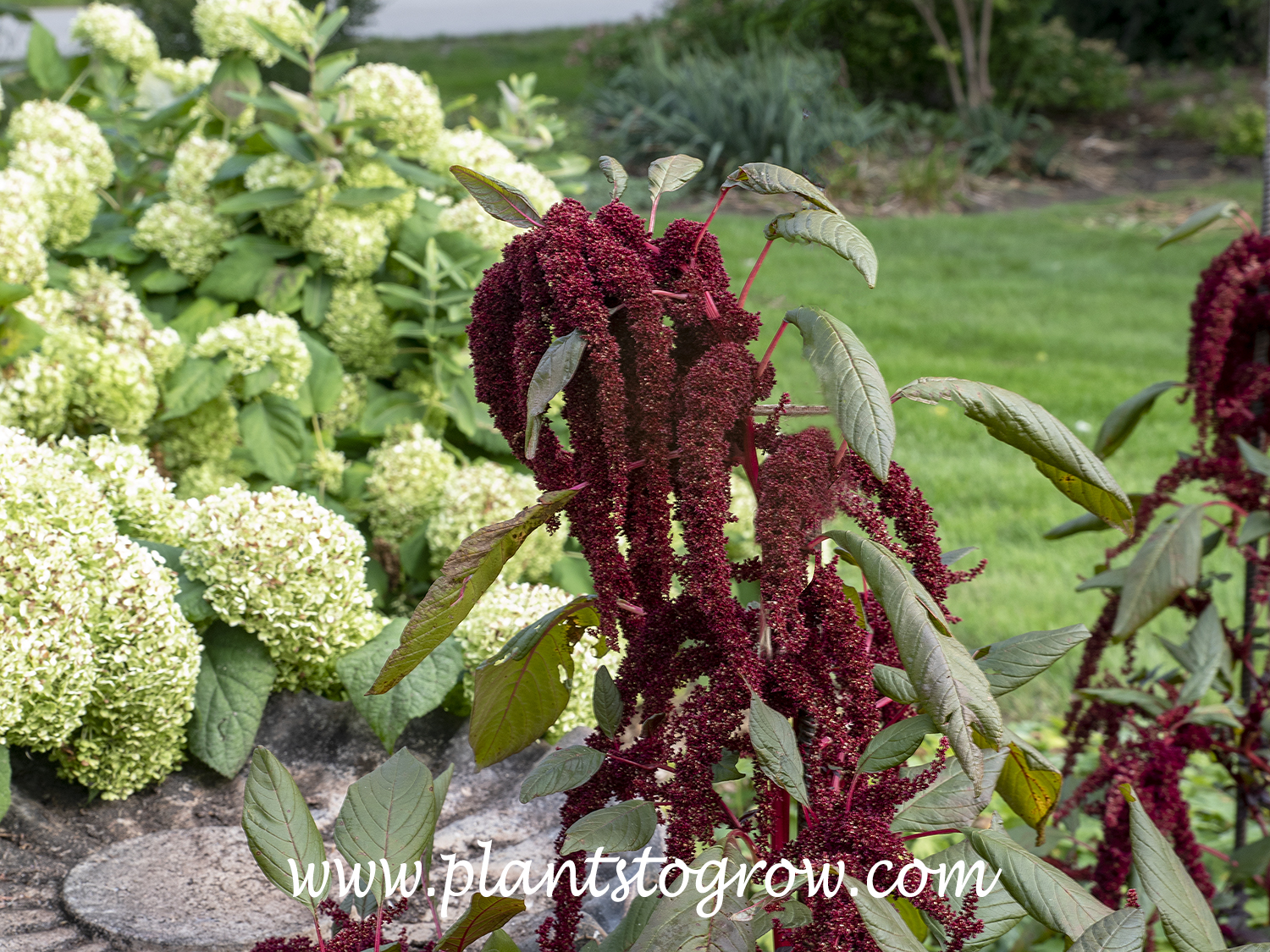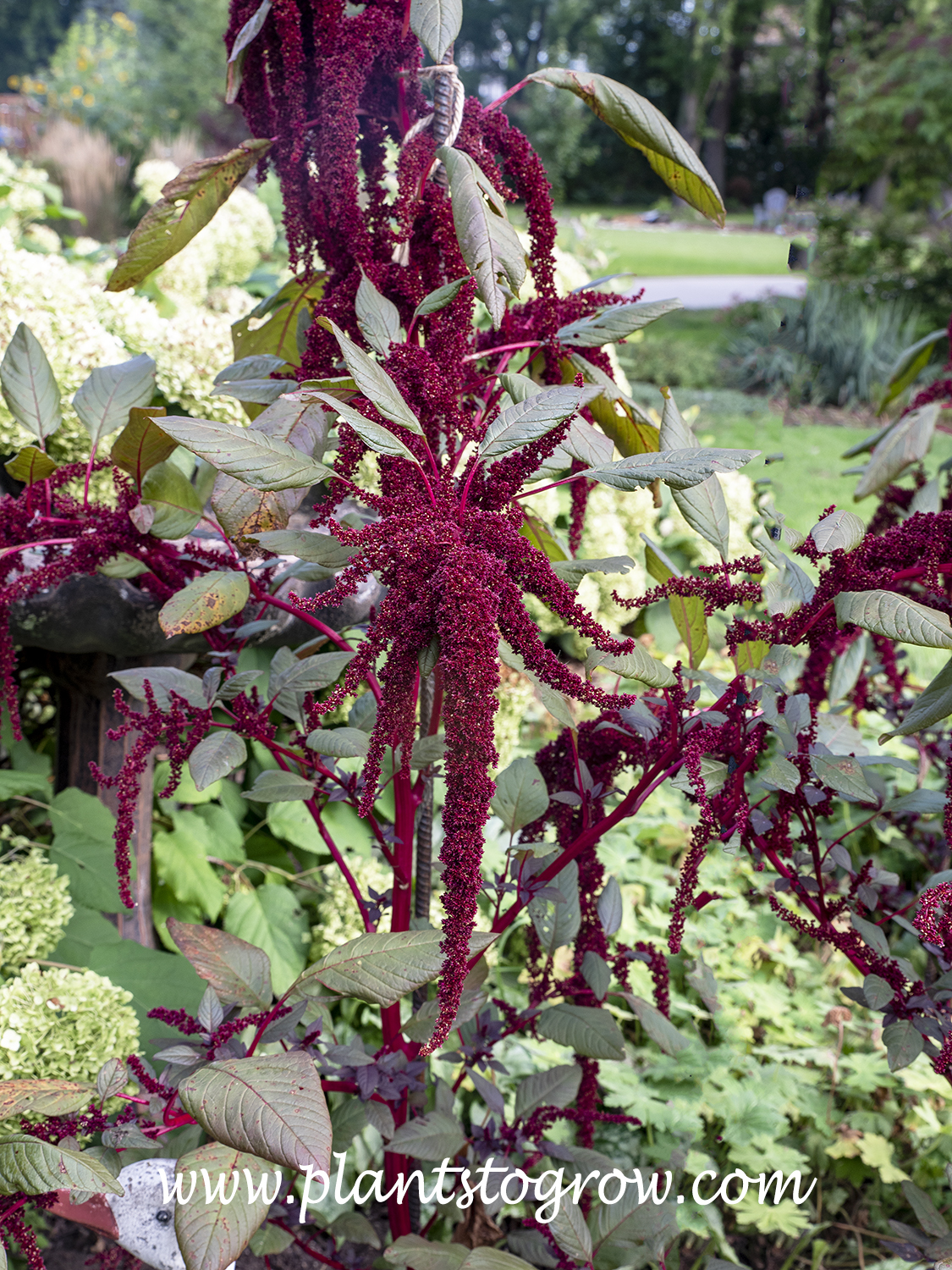| Description | 'Hopi Red Dye' Amaranth (Amaranthus cruentus x powellii) The name refers to the fact that the Hopi Indians used a dye made from this plant. Has edible seeds and foliage |
|---|---|
| Pronunciation | (am-uh-RANTH-us) |
| Plant Type | Annuals, Edibles Vegetables, Edible Fruit, Site author's observations |
| Sunlight | full |
| Moisture | average, dry |
| Soil & Site | average |
| Flowers | less pendant than other Amaranth, have a knotted appearance, and deep-red flower bracts, over all they seem to be smaller |
| Fruit | small seeds can be eaten raw, sprouted, toasted, roasted, or ground into flour |
| Leaves | dark burgundy to red, edible in salads or steamed |
| Stems | red |
| Dimensions | Four-plus feet tall |
| Maintenance | needs to be staked |
| Propagation | seeds |
| Misc Facts | Originally grown as a dye plant by the southwestern Hopi Nation, This variety has the reddest seedlings of any amaranth known, Hence the name Hopi Red Dye Amaranth |
| Notes & Reference | Site Authors observations |

Cart


